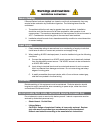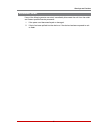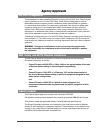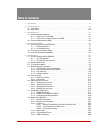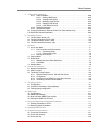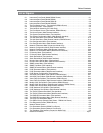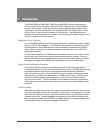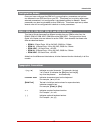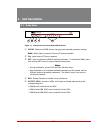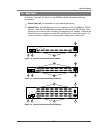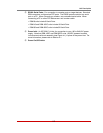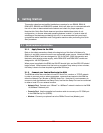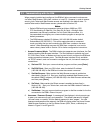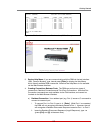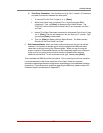
1-2
Introduction
Configuration Backup
Once you have configured the RSM to fit your application, parameters and options
can be saved to an ASCII text file on your PC. This allows you to quickly restore user-
selected parameters if unit configuration is accidentally altered or deleted. Saved
parameters can also be uploaded to other RSM units. This allows rapid set-up when
several units will be configured with identical or similar parameters.
RSM-8, RSM-16, RSM-16DC, RSM-32 and RSM-32DC Units
This User’s Guide discusses five different models from our RSM product line: the
RSM-8, RSM-16, RSM-16DC, RSM-32 and the RSM-32DC. Throughout this User's
Guide, all of these units are referred to as the "RSM." Note however that these units
differ as described below:
• RSM-8: 8 Serial Ports, 100 to 240 VAC, 50/60 Hz, 5 Watts
• RSM-16: 16 Serial Ports, 100 to 240 VAC, 50/60 Hz, 5 Watts
• RSM-16DC: 16 Serial Ports, -48 VDC
• RSM-32: 32 Serial Ports, 100 to 240 VAC, 50/60 Hz, 5 Watts
• RSM-32DC: 32 Serial Ports, -48 VDC.
Aside from the differences listed above, all other features function identically in all five
models.
Typographic Conventions
^ (e.g. ^X) Indicates a control character. For example, the text
"^X" (Control X) indicates the [Ctrl] key and the [X]
key must be pressed simultaneously.
COURIER FONT Indicates characters typed on the keyboard.
For example, /E or /P 02.
[Bold Font] Text set in bold face and enclosed in square brackets,
indicates a specific key.
For example, [Enter] or [Esc].
< > Indicates required keyboard entries:
For Example: /P <n>.
[ ] Indicates optional keyboard entries.
For Example: /W [n].



